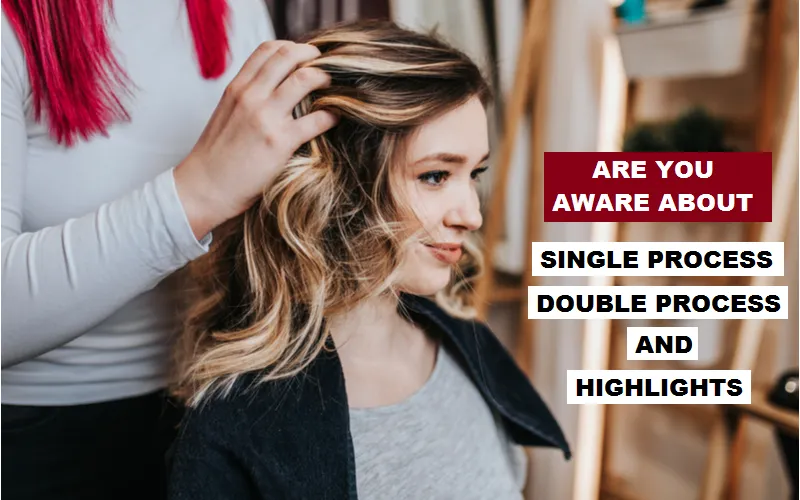Table of Contents
Welcome to our comprehensive guide on single process hair color and double process hair color. Additionally we added about hair highlights also. If you’re considering a hair color transformation or simply want to refresh your look, it’s essential to understand the differences between these two techniques.
In this article, we’ll explore the world of hair color and break down the distinctions between single process color and double process, empowering you to make the right choice for your desired outcome.
Whether you’re a hair color enthusiast or a first-time explorer, we’ll provide you with valuable insights from a professional hair expert’s perspective. So, let’s dive in and discover everything you need to know about single process and double process hair color techniques.
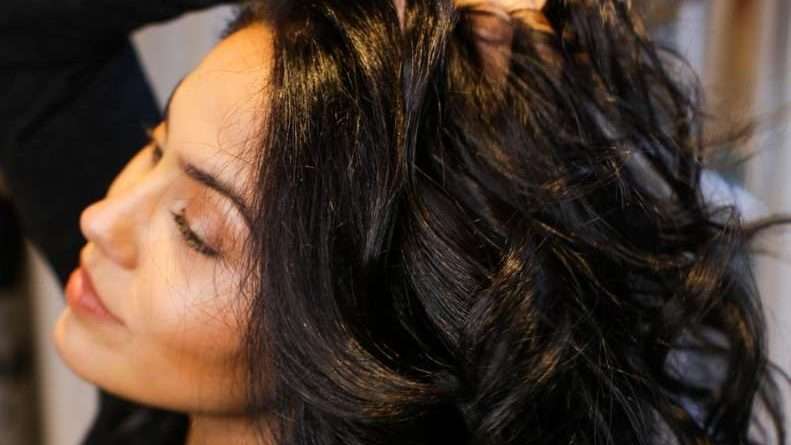
Single Process Color vs. Double Process Hair Color
When it comes to transforming your hair color, there are various techniques available at your disposal. Two popular options are single process hair color and double process hair color. Understanding the fundamentals of each technique is crucial in determining which one is best suited for your desired look. Let’s delve into the details of single process and double process hair color to help you make an informed decision.
Single Process Color:
Single process color involves applying a single shade of color to your entire head of hair. It is a relatively straightforward technique that can enhance your natural hair color or completely change it, depending on your preference. The process typically involves a single application of color, allowing for uniform coverage and a consistent end result.
One of the key benefits of single process hair color is its versatility. It can be used to achieve various effects, such as adding depth and dimension, covering gray hair, or creating a bold new look. This technique is suitable for individuals who want a relatively low-maintenance hair color change or those who prefer a more subtle transformation.
Double Process Hair Color:
Double process hair color, also known as two-step color, is a more intricate technique that involves two distinct steps to achieve the desired result. This technique is commonly used when you want to lighten your hair by more than a few shades or achieve vibrant, fashion-forward colors.
The first step in the double process involves lightening the hair using a bleach or lightening agent. This helps to remove the existing pigment from your hair strands, creating a blank canvas for the desired color. After the hair has been lightened, the second step involves applying the chosen hair color to achieve the desired shade.
Double process hair color is often preferred by individuals who desire dramatic transformations or want to experiment with trendy and unconventional colors. It allows for greater customization and can create stunning results, but it also requires more expertise and maintenance compared to single process hair color.
Characteristics and Benefits of Single Process Color and Double Process Hair Color
Single Process Color:
Single process hair color offers several distinct characteristics and benefits that make it a popular choice for many individuals seeking a hair color change. Here are some key features and advantages of single process hair color:
- Uniform Coverage: With single process hair color, a single shade is applied to the entire head of hair, ensuring consistent coverage from roots to ends. This results in a uniform and seamless color throughout.
- Versatility: Single process hair color provides versatility in terms of enhancing your natural hair color, going darker, or even trying out a lighter shade. It allows for subtle changes or more dramatic transformations, depending on your preference.
- Gray Coverage: If you’re looking to cover gray hair, single process hair color can effectively conceal those pesky grays and provide you with a youthful and vibrant look.
- Low Maintenance: Compared to other hair color techniques, single process hair color generally requires less maintenance. The color gradually fades over time, allowing for a seamless transition between touch-ups.
Double Process Hair Color:
Double process hair color offers its own unique set of characteristics and benefits that make it an appealing choice for those seeking a more dramatic hair color transformation. Here are the notable features and advantages of double process hair color:
- Lightening Capability: Double process hair color is particularly suitable for those who want to lighten their hair significantly. The initial lightening step allows for achieving shades that are several levels lighter than your natural hair color.
- Vibrant and Fashion-Forward Colors: If you’re looking to embrace vibrant and unconventional hair colors, double process hair color is the way to go. It opens up a world of possibilities for experimenting with bold and trendy hues.
- Customization: Double process hair color provides greater customization options compared to single process. You can achieve multi-dimensional looks, incorporate highlights or lowlights, and create unique color combinations that reflect your personal style.
- High Impact: This technique delivers high impact and noticeable results, making it ideal for those who want to make a bold statement with their hair color.
By understanding the specific characteristics and benefits of both single process and double process hair color techniques, you can determine which one aligns best with your preferences and desired outcome.
Differences between Single Process Hair and Double Process Hair Color
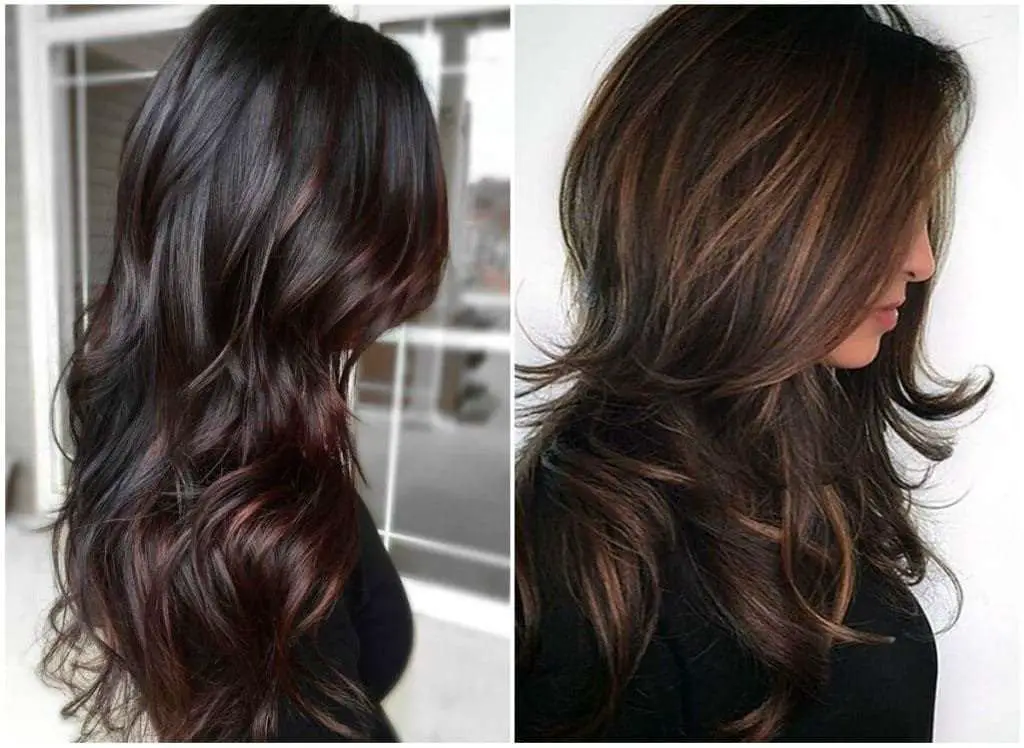
Certainly! Here’s a chart comparing the key differences between single process hair color and double process hair color:
| Aspect | Single Process Color | Double Process Hair Color |
| Process | One step process where a single shade is applied to the entire head | Two-step process involving lightening the hair and then applying the desired color |
| Color Change | Can darken, lighten, or enhance the natural hair color | Provides the option for dramatic color transformations or achieving bold and vibrant shades |
| Coverage | Offers overall coverage for a uniform color change | Allows for customization and targeted color application |
| Customization | Limited customization options within the chosen shade | Provides more flexibility for creating unique color combinations and effects |
| Technique | Involves applying one color directly to the hair | Requires lightening the hair first, followed by the application of the desired color |
| Maintenance | Low maintenance with gradual fading over time | May require more frequent maintenance and touch-ups to maintain the desired color |
| Suitable Hair Types | Suitable for most hair types | Best for individuals with healthy hair, as lightening can cause damage |
| Time and Cost | Generally quicker and more cost-effective compared to double process | May require more time and be more expensive due to the multiple steps involved |
| Outcome | Provides a more natural and subtle color change | Offers the opportunity for more dramatic and bold hair color transformations |
It’s important to note that the specific results and effects can vary depending on individual hair type, condition, and the expertise of the colorist. Consulting with a professional hair colorist will help determine the best technique and approach to achieve your desired hair color goals.
11 Single Process Color Ideas
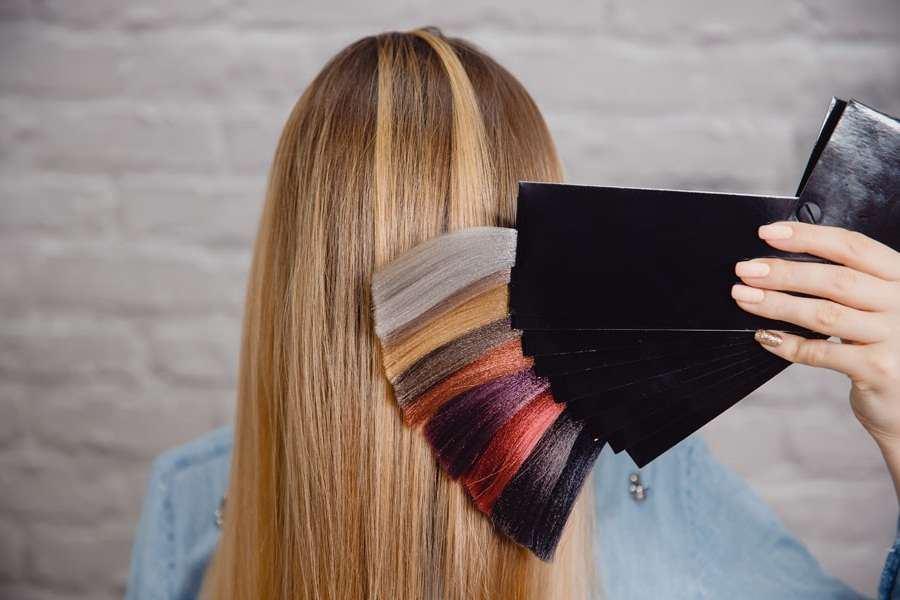
Single process hair color provides a wide array of possibilities for transforming your hair and achieving a fresh new look. Here are some stunning color ideas that you can consider:
- Caramel: Add warmth and dimension to your hair with caramel tones. This versatile shade complements various skin tones and can create a beautiful sun-kissed effect.
- Jet Black: For a bold and dramatic change, opt for jet black hair color. This timeless shade exudes elegance and adds a touch of mystery to your overall appearance.
- Chocolate Brown: Enhance your natural hair color with rich and luscious chocolate brown. It offers depth and richness while maintaining a sophisticated and natural-looking result.
- Auburn: Embrace a fiery and vibrant look with auburn hair color. This stunning shade combines red and brown tones, adding warmth and intensity to your hair.
- Garnet: Make a statement with deep, jewel-toned garnet hair color. This shade offers a striking and luxurious look, perfect for those who want to stand out from the crowd.
- Cream Blonde: Achieve a soft and ethereal look with cream blonde hair color. This delicate shade of blonde creates a romantic and feminine vibe.
- Violet Rose: Embrace your inner creativity with a vibrant violet rose hair color. This playful and unique shade adds a touch of whimsy to your overall style.
- Lavender Ice: Channel your inner cool with a mesmerizing lavender ice hair color. This pastel hue offers a dreamy and enchanting look that is sure to turn heads.
- Copper: Infuse warmth and richness into your hair with a captivating copper shade. This fiery hue adds a unique and captivating twist to your overall appearance.
- Light Blonde: Go for a classic and timeless look with a radiant light blonde hair color. This shade offers a fresh and youthful vibe that can brighten up your entire look.
- Pastel Pink: Embrace your playful side with a soft and romantic pastel pink hair color. This whimsical shade adds a touch of femininity and charm to any hairstyle.
Single Process Color Application (Video)
5 Double Process Color Ideas
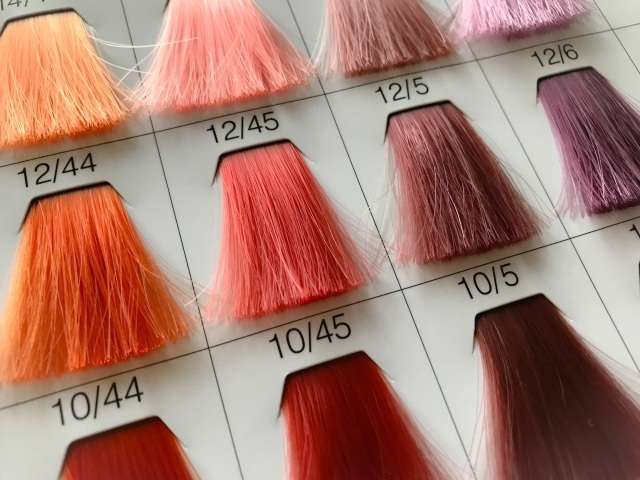
- Platinum Blonde: Achieve a stunning and icy look with platinum blonde hair color. This ultra-light shade requires careful lightening and provides a striking, head-turning result.
- Pastel Rainbow: Embrace your playful side with a pastel rainbow hair color. This double process technique allows for blending soft pastel hues, creating a whimsical and dreamy effect.
- Rose Gold: Combine warm pink tones with hints of gold to achieve a mesmerizing rose gold hair color. This double process technique results in a romantic and trendy look.
- Smoky Gray: Create a chic and edgy appearance with smoky gray hair color. This double process technique involves lightening the hair and applying a gray toner for a captivating result.
- Mermaid Blue: Dive into a sea of vibrant colors with a mermaid blue hair color. This double process technique allows for achieving a bold and enchanting shade reminiscent of ocean waves.
What Are Highlights?
Highlights are a popular hair coloring technique that involves adding lighter strands or streaks to your hair to create dimension and depth. They can be applied to any hair color, from blonde to brunette and even red, to enhance the natural beauty of your locks. Here’s a closer look at highlights and why they are a favorite choice for many individuals:
- Definition and Placement: Highlights are lighter sections of hair strategically placed throughout your hair to mimic the way the sun naturally lightens your hair. They are typically applied to specific areas, such as the crown, around the face, or scattered throughout the hair, depending on the desired effect.
- Lightening Technique: Highlights are achieved through a lightening process, where small sections of hair are selected and treated with a hair lightener or bleach. The degree of lightening can vary, ranging from subtle, soft highlights to more pronounced, bold ones.
- Enhancing Hair Color: Highlights can complement your natural hair color or be used to enhance a chosen hair color. They add brightness and dimension, creating visual interest and movement within your hair.
- Maintenance and Care: The maintenance required for highlights varies depending on the technique and the desired look. Some highlights may need touch-ups every few months, while others can grow out more naturally without requiring frequent salon visits. Using color-safe hair products and protecting your hair from excessive heat and sun exposure can help maintain the vibrancy of your highlights.
Types of Highlights
- Foil Highlights: This technique involves wrapping small sections of hair in foil before applying the lightener, allowing for precise placement and controlled processing.
- Balayage Highlights: Balayage is a freehand technique where the lightener is painted onto the hair using a sweeping motion, resulting in a more natural, sun-kissed look.
- Babylights: Babylights are very fine, delicate highlights that mimic the natural highlights found in children’s hair. They provide a soft and subtle glow.
- Ombre: Ombre highlights involve a gradual transition from darker roots to lighter ends. This technique creates a bold, statement-making effect.
Highlights offer a versatile way to add dimension, brightness, and visual interest to your hair. Consult with a professional hair colorist to determine the best highlighting technique and shades that will complement your skin tone, hair type, and overall style.
Related: Can I Wash My Hair After Highlights? (Answered)
Single-Process Color vs. Highlights: What’s the Difference?
Single-process color and highlights are two distinct hair coloring techniques that offer different effects and outcomes. Understanding the differences between these methods can help you decide which one is best suited for your desired look. Here’s a chart comparing the key differences between single-process color and highlights:
| Aspect | Single Process Color | Highlights |
| Overall Color Change | Applied to entire head for a uniform color change | Selected strands or sections for dimension and contrast |
| Depth and Coverage | Full coverage or enhancing natural hair color | Lighter shades alongside base color |
| Uniformity | Even application throughout hair for a uniform appearance | Strategic placement for a multi-tonal effect |
| Maintenance | Gradual fade with seamless transition between touch-ups | Regular touch-ups to maintain appearance as hair grows |
| Effect | Cohesive and consistent look | Dimension and contrast for visual interest |
| Customization | Limited to chosen shade for overall color change | Versatility in shade choices and placement |
| Lightening Technique | N/A | Lightening product used to lift color of selected strands |
| Maintenance | Less frequent touch-ups | Regular touch-ups as hair grows for a seamless look |
Please note that this chart provides a general overview of the differences between single-process color and highlights. The specific outcomes and maintenance requirements may vary depending on individual preferences, hair type, and the expertise of the colorist.
Can You Get Both Highlights and Single Process Color?
Yes, it is possible to have both highlights and single process color in your hair. Combining these two techniques can create a dynamic and personalized look. Here’s what you need to know about getting both highlights and single process color:
- Contrast and Dimension: By incorporating highlights and single-process color, you can achieve a hairstyle with added contrast and dimension. The highlights will introduce lighter tones or shades, while the single-process color will provide an overall base color or enhance your natural hair color.
- Customization: The combination of highlights and single-process color allows for a high level of customization. You can choose the placement and intensity of the highlights, as well as the specific shade for the single-process color. This enables you to create a unique and tailored look that suits your style and preferences.
- Consultation with a Professional: To ensure the best outcome, it’s crucial to consult with a professional hair colorist. They will assess your hair condition, consider your desired result, and provide expert advice on the most suitable shades, techniques, and placement for the highlights and single-process color.
- Maintenance Considerations: Keep in mind that combining highlights and single-process color may require more frequent maintenance compared to either technique on its own. The highlights may need touch-ups as your hair grows, and the single-process color may require periodic refreshment to maintain its vibrancy. Your colorist will guide you on the recommended maintenance schedule based on your specific hair and chosen colors.
- Hair Health and Care: It’s essential to prioritize hair health and maintain proper care to preserve the integrity of your colored hair. This includes using color-safe and nourishing hair products, minimizing heat styling, and protecting your hair from excessive sun exposure. Regular conditioning treatments can help keep your hair moisturized and vibrant.
The Final Takeaway
When it comes to choosing between single process hair color, double process hair color, highlights, or a combination of techniques, it’s important to consider your desired outcome, hair type, and maintenance preferences. Here are the key points to remember:
- Single process color involves applying a single shade of color to the entire head, offering uniform coverage and versatility for enhancing or changing your hair color.
- Double process hair color consists of two steps: lightening the hair and applying the desired color, providing more customization options and ideal for dramatic transformations or bold shades.
- Highlights add lighter strands or sections to create dimension and contrast, allowing for a multi-tonal effect that complements your base color.
- Single process hair color is low maintenance, gradually fading over time and providing a seamless transition between touch-ups.
- Highlights may require regular touch-ups to maintain their appearance as your hair grows and maintain the desired contrast and dimension.
- Combining highlights and single-process color can create a dynamic and personalized look with added contrast and customization possibilities.
- Consulting with a professional hair colorist is crucial to determine the best techniques, shades, and placement for achieving your desired result.
- Proper hair care, including using color-safe products and protecting your hair from heat and sun exposure, is essential for maintaining the vibrancy and health of your colored hair.
By understanding the differences and considering your personal preferences, you can make an informed decision that aligns with your style goals and ensures beautiful, long-lasting results. Embrace the versatility and creativity that hair color techniques offer, and enjoy the journey of transforming your hair into a stunning reflection of your individuality.
FAQs
How long does single process color last?
Single process color typically refers to a hair coloring technique that involves applying a single color or shade to the hair.
The longevity of single process color can vary depending on various factors, such as the quality of the dye, the porosity of your hair, your hair care routine, and how frequently you wash your hair.
On average, single process color can last anywhere from 4 to 8 weeks before it starts to fade or show signs of regrowth.
What is the best single process color?
Determining the “best” single process color is subjective and depends on personal preferences, as well as factors such as your skin tone, natural hair color, and desired outcome.
It’s generally recommended to consult with a professional hair colorist or stylist who can assess your hair and help you choose a color that complements your features and suits your desired look.
Should I do single process color?
Whether or not you should do a single process color depends on your personal preferences, hair condition, and desired outcome. Single process color can be a good option if you want to enhance your natural hair color, cover up gray hair, or achieve a new overall color.
However, it’s important to consider the potential effects of chemical processing on your hair, as well as the maintenance required to keep the color looking fresh.
Is single process color the same as root touch up?
A single process color and a root touch-up are not necessarily the same thing, although they can be related. A root touch-up typically refers to the process of applying color specifically to the regrowth or roots of the hair to match the existing color or cover up gray hair.
It is often a part of a single process color service, but not always. Single process color can involve applying color to the entire hair, including the roots, while also potentially incorporating additional techniques like highlights or lowlights.
Do I need single or double process color?
Whether you need a single or double process color depends on the desired result and the current condition of your hair. Single process color is suitable for many individuals who want to change or enhance their hair color without significant lightening or bleaching.
Double process color, on the other hand, involves two steps: lightening the hair and then applying the desired color. This technique is typically used when going lighter than your natural hair color or when you want to achieve a more dramatic change.
It’s best to consult with a professional colorist or stylist who can assess your hair and guide you on the most appropriate coloring technique for your desired outcome.
What is the double process hair color for dark hair?
Double process hair color for dark hair typically involves a two-step process of lightening the hair before applying the desired color.
The first step is usually a bleaching or lightening process to remove or lighten the existing pigment in the hair, followed by the application of the desired color. This technique is often used when someone wants to achieve a significantly lighter hair color than their natural shade.
How often should you double process your hair?
The frequency of double processing your hair depends on various factors, such as how quickly your hair grows, the rate of regrowth, and the desired outcome.
Generally, it is recommended to allow a significant amount of regrowth (about 4 to 6 weeks) before performing another double process, as excessive bleaching or lightening can be damaging to the hair.
It’s important to give your hair enough time to recover and ensure it is in a healthy condition before undergoing another round of double processing.
Should I wash my hair before a double process?
It is generally not necessary to wash your hair immediately before a double process. In fact, it is often recommended to have unwashed hair because the natural oils can provide some protection to the scalp and hair during the chemical process.
However, it’s best to follow the specific instructions provided by your stylist or colorist, as they may have their own preferences or guidelines.
What happens if you over process hair?
Overprocessing hair occurs when the hair is subjected to excessive chemical treatments, such as repeated bleaching or lightening processes, without proper care and consideration for the hair’s health.
Overprocessing can lead to various issues, including hair breakage, dryness, brittleness, loss of elasticity, and damage to the hair cuticle. The hair may become weak, fragile, and prone to split ends. Additionally, overprocessing can result in uneven or undesirable color results.
It’s essential to follow proper hair care practices, give your hair time to recover between treatments, and seek the guidance of a professional colorist to avoid overprocessing and minimize damage to your hair.
Related: 10 Color Oops Reviews and Experiences: Is Color Oops the Best Hair Color Remover?

